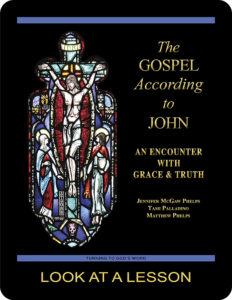wanting & doing
 The Gospel According to Luke 6:27–38 (NABRE) looks at the golden rule, which focuses on the relationship between wanting and doing. “Do to others as you would have them do to you” is a statement we frequently hear, perhaps so often that some of the emphasis is dulled. While typical translations are good, re-examining the language of this statement may nonetheless help us get to the bottom of what Jesus is asking us to do.
The Gospel According to Luke 6:27–38 (NABRE) looks at the golden rule, which focuses on the relationship between wanting and doing. “Do to others as you would have them do to you” is a statement we frequently hear, perhaps so often that some of the emphasis is dulled. While typical translations are good, re-examining the language of this statement may nonetheless help us get to the bottom of what Jesus is asking us to do.
There are two Greek verbs in this statement, ποιέω (poieo), which means “I do” and θέλω (thelo), which means “I want.” Both parts of this statement contain the verb for doing. What’s interesting is the suggested interplay between that action and our desire.
Human nature often focuses on what we want others to do for us, and most action that comes from such desire is aimed toward fulfillment of that desire. We work to make others act on our want. In this passage, Jesus tells us that we have the power to fulfill our desire—though maybe not how we saw it—by doing for others what we desire rather than having them do it for us. Our desire comes into the world through our action—not in how we make others treat us but in how we treat them.
This is a selfless and counter-intuitive suggestion. It’s worth noting that it doesn’t ask me to do whatever some else wants. My desire still is the measure of my action. Jesus’ simple statement contains much wisdom about how we are to act, and it’s valuable to spend some time considering the interplay between our desires and our actions.
you also may like our study of the Gospel According to John
 The Gospel According to John: An Encounter with Grace & Truth, a 25-lesson Catholic Bible study with an imprimatur, examines the Fourth Gospel’s view of Jesus Christ as the Son of God, with special emphasis on the institution of the sacraments of the Church as the means by which Christians are purified and made holy. This recently revised study includes maps and additional commentary, and takes a closer look at the way in which Jesus relates to individual men and women. Click on the book’s cover to view a sample lesson.
The Gospel According to John: An Encounter with Grace & Truth, a 25-lesson Catholic Bible study with an imprimatur, examines the Fourth Gospel’s view of Jesus Christ as the Son of God, with special emphasis on the institution of the sacraments of the Church as the means by which Christians are purified and made holy. This recently revised study includes maps and additional commentary, and takes a closer look at the way in which Jesus relates to individual men and women. Click on the book’s cover to view a sample lesson.
 Click on the picture of the statue of Moses with horns (above) to learn more about Lost in Translation. A new entry is archived each Monday. Contact us to receive Lost in Translation by email every week. You may use any of the contact links on our website to ask Matthew a question.
Click on the picture of the statue of Moses with horns (above) to learn more about Lost in Translation. A new entry is archived each Monday. Contact us to receive Lost in Translation by email every week. You may use any of the contact links on our website to ask Matthew a question.
